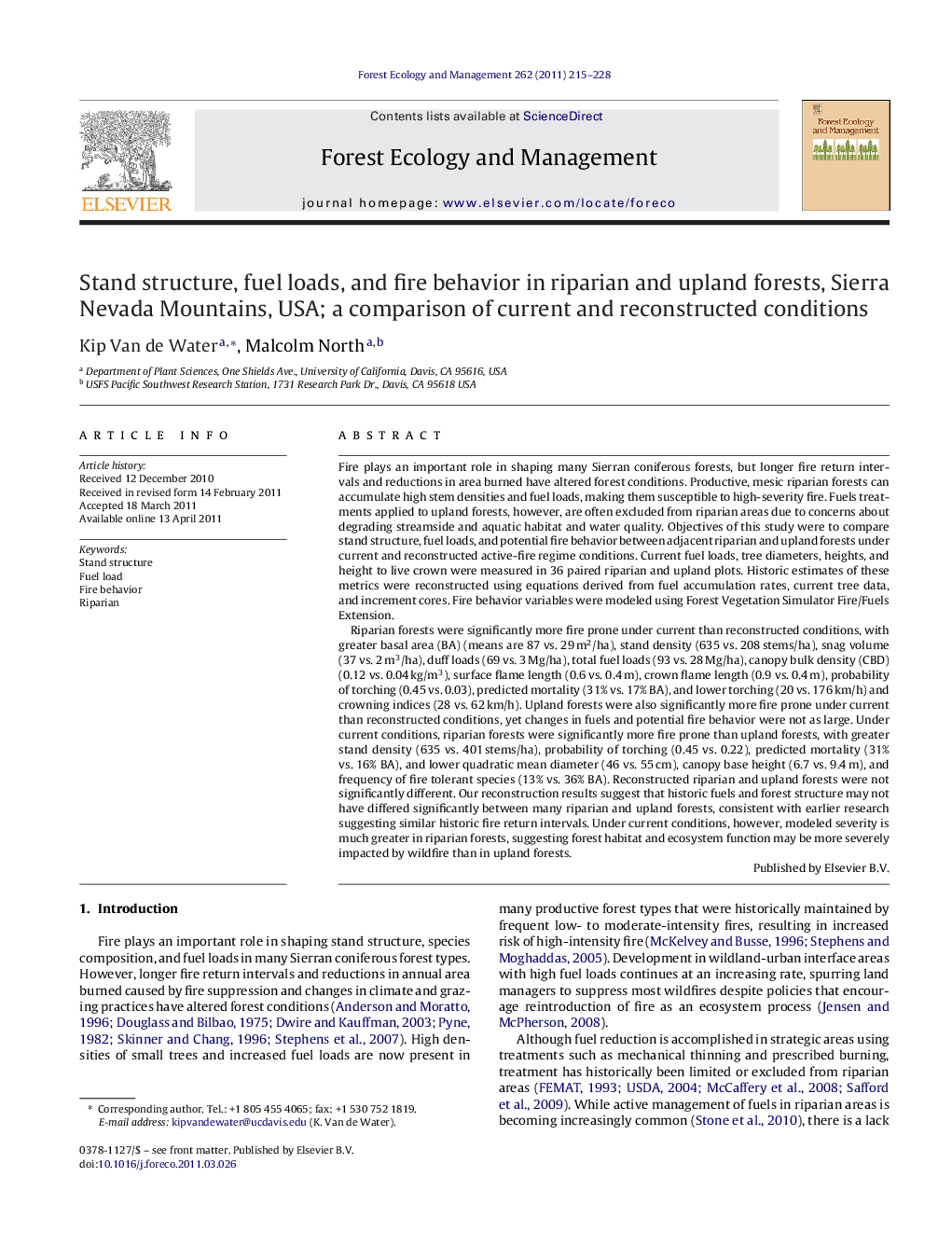| کد مقاله | کد نشریه | سال انتشار | مقاله انگلیسی | نسخه تمام متن |
|---|---|---|---|---|
| 87962 | 159273 | 2011 | 14 صفحه PDF | دانلود رایگان |

Fire plays an important role in shaping many Sierran coniferous forests, but longer fire return intervals and reductions in area burned have altered forest conditions. Productive, mesic riparian forests can accumulate high stem densities and fuel loads, making them susceptible to high-severity fire. Fuels treatments applied to upland forests, however, are often excluded from riparian areas due to concerns about degrading streamside and aquatic habitat and water quality. Objectives of this study were to compare stand structure, fuel loads, and potential fire behavior between adjacent riparian and upland forests under current and reconstructed active-fire regime conditions. Current fuel loads, tree diameters, heights, and height to live crown were measured in 36 paired riparian and upland plots. Historic estimates of these metrics were reconstructed using equations derived from fuel accumulation rates, current tree data, and increment cores. Fire behavior variables were modeled using Forest Vegetation Simulator Fire/Fuels Extension.Riparian forests were significantly more fire prone under current than reconstructed conditions, with greater basal area (BA) (means are 87 vs. 29 m2/ha), stand density (635 vs. 208 stems/ha), snag volume (37 vs. 2 m3/ha), duff loads (69 vs. 3 Mg/ha), total fuel loads (93 vs. 28 Mg/ha), canopy bulk density (CBD) (0.12 vs. 0.04 kg/m3), surface flame length (0.6 vs. 0.4 m), crown flame length (0.9 vs. 0.4 m), probability of torching (0.45 vs. 0.03), predicted mortality (31% vs. 17% BA), and lower torching (20 vs. 176 km/h) and crowning indices (28 vs. 62 km/h). Upland forests were also significantly more fire prone under current than reconstructed conditions, yet changes in fuels and potential fire behavior were not as large. Under current conditions, riparian forests were significantly more fire prone than upland forests, with greater stand density (635 vs. 401 stems/ha), probability of torching (0.45 vs. 0.22), predicted mortality (31% vs. 16% BA), and lower quadratic mean diameter (46 vs. 55 cm), canopy base height (6.7 vs. 9.4 m), and frequency of fire tolerant species (13% vs. 36% BA). Reconstructed riparian and upland forests were not significantly different. Our reconstruction results suggest that historic fuels and forest structure may not have differed significantly between many riparian and upland forests, consistent with earlier research suggesting similar historic fire return intervals. Under current conditions, however, modeled severity is much greater in riparian forests, suggesting forest habitat and ecosystem function may be more severely impacted by wildfire than in upland forests.
► Fuels and forest structure were not different between reconstructed riparian and upland forests.
► Riparian forests are more prone to high-severity fire under current than reconstructed conditions.
► Upland forests are more prone to high-severity fire under current than reconstructed conditions.
► Current riparian forests are more prone to high-severity fire than current upland forests.
Journal: Forest Ecology and Management - Volume 262, Issue 2, 15 July 2011, Pages 215–228